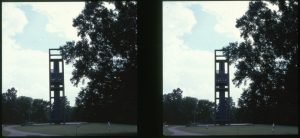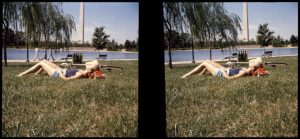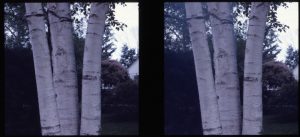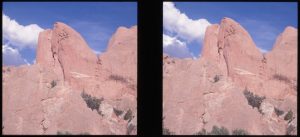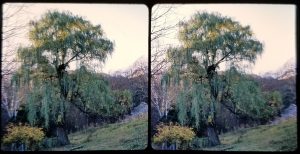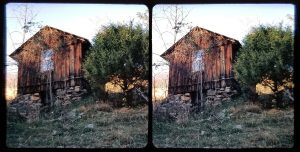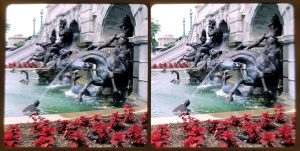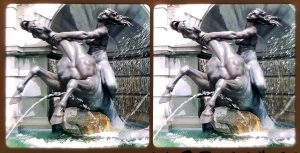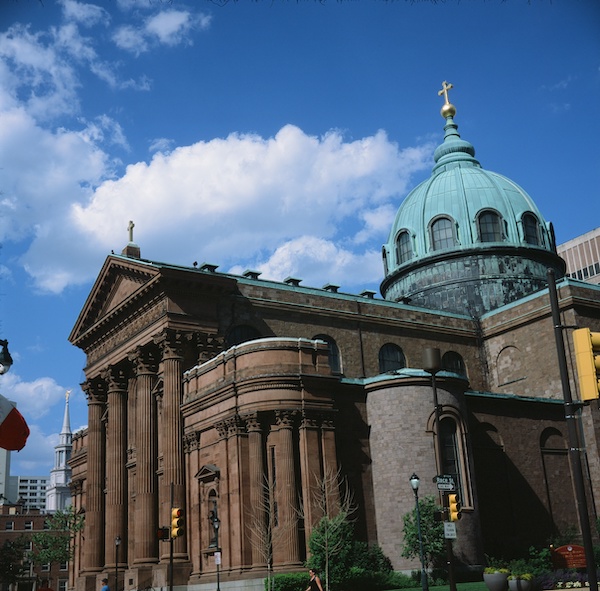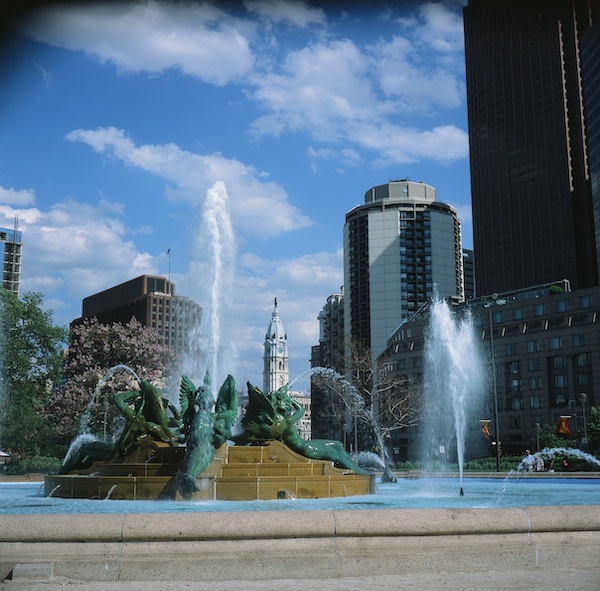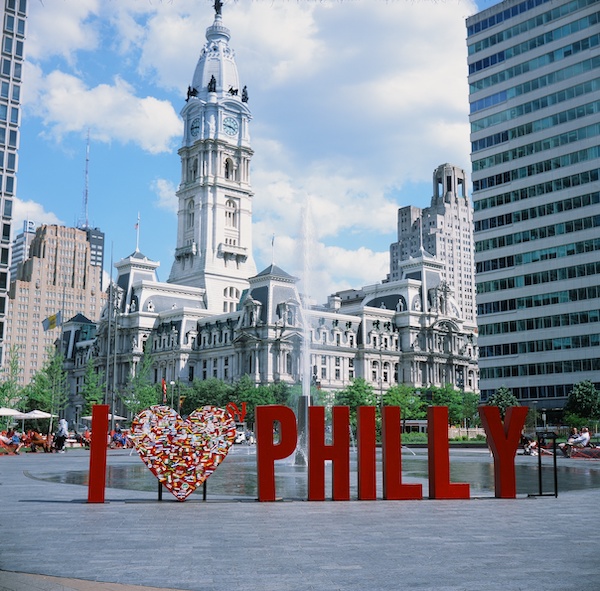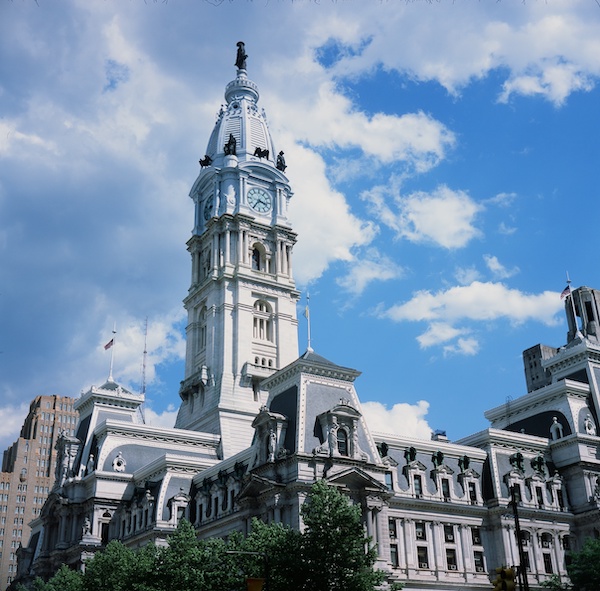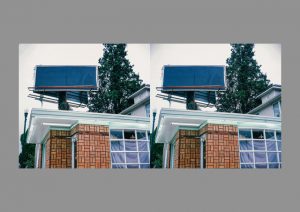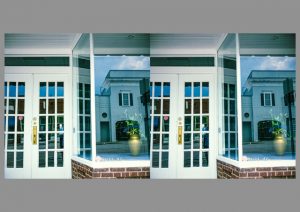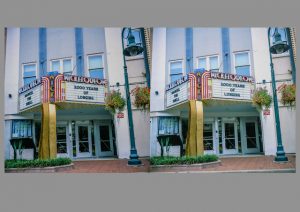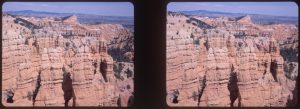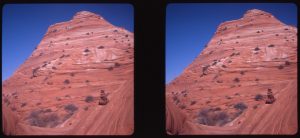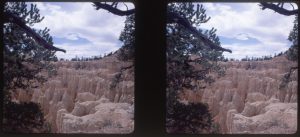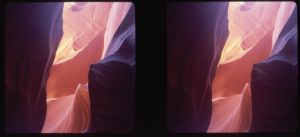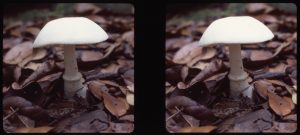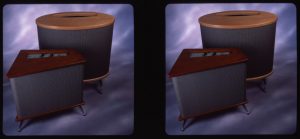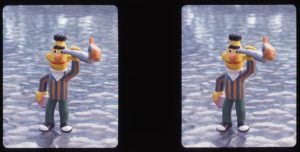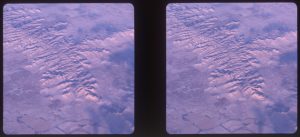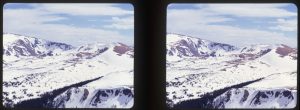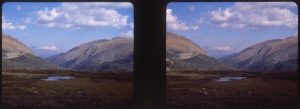One of my favorite spots to photograph wildlife in South Florida is at Shark Valley, a unit of Everglades National Park. The area was originally developed by Humble Oil, and there is a 15 mile loop road (for trams and bikes), largely bordered by water created when they “borrowed” material to make the roadbeds. It is great habitat for American Alligators and many species of large birds, often close enough for photography with conventional stereo cameras. The birds spend most of their time on the OTHER side of the canal, but visit the near side often for brief photo ops.The land proved useless for oil drilling , so was donated to the US government. Fuji Provia 100 i n TL-120
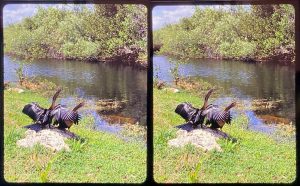
ANHINGA PAIR This image shows two Anhingas (Anhinga anhinga is the scientific name, one of my favorites.) They are excellent underwater swimmers due to lack of oil waterproofing on their feathers; afterward, they need to spread their wings out to dry in an iconic pose.
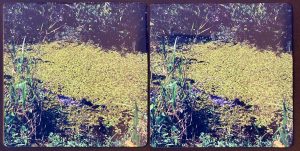
GATOR CAMO This American Alligator is peaking out from under the floating vegetation as it swims down the canal.
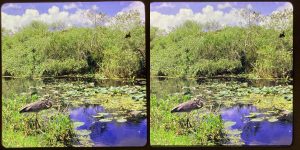
GREAT BLUE HERON AT SHARK VALLEY. This heron is posing at the edge of the canal.

CYPRESS AND BROMELIADS: This was taken in a nearby area, part of the Big Cypress National Preserve. The Cypress trees are conifers but deciduous, dropping their needle-like leaves in the winter, greening up again in the spring. The Cardinal Plant with its bright red bracts is a type of bromeliad (aka pineapple family)
